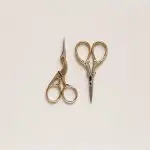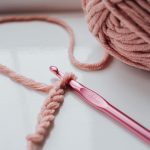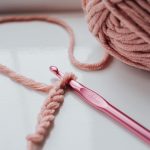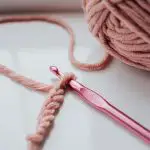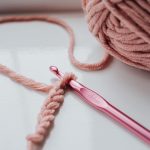If you’re new to the world of sewing or just looking to upgrade your equipment, you may have come across references to a rotary sewing machine. But what exactly is a rotary sewing machine, and why might it be the right choice for you?
In short, a rotary sewing machine is a type of machine that uses a circular hook mechanism to create stitches. These machines have been around for over a century, and they remain popular today for their efficiency and versatility.
In this article, we’ll take a closer look at how rotary sewing machines work, the advantages they offer, and how to choose the right one for your needs. So whether you’re a seasoned pro or a beginner, read on to learn more about this powerful tool.
Table of Contents
Brief History of Sewing Machines
Let’s take a quick trip back in time to learn about the fascinating history of sewing machines, shall we?
The first sewing machine was invented in 1790 by Englishman Thomas Saint, but it wasn’t until 1830 that a truly functional machine was created by French tailor Barthelemy Thimonnier. Thimonnier’s machine used a single thread and a hooked needle to create a chain stitch, and it was capable of making 200 stitches per minute.
In 1846, American inventor Elias Howe patented the first sewing machine that used two threads to create a lockstitch. This new machine was much more efficient and reliable than previous designs, and it quickly gained popularity in the United States.
However, it wasn’t until Isaac Singer’s improvements to the lockstitch machine in the 1850s that sewing machines became widely available and affordable for home use.
Today, sewing machines have come a long way from their humble beginnings. Modern machines are capable of a wide range of stitches and features, including computerized controls and automatic needle threading. But it’s important to remember the pioneers of sewing machine technology and the impact their inventions had on the world of fashion and manufacturing.
Advantages of Rotary Sewing Machines
One of the benefits of using a rotary machine is the speed and efficiency it offers compared to other types of sewing equipment. Since the rotary machine uses a rotary hook, it creates a smooth and continuous stitch without interruptions. This eliminates the need to stop and start the machine frequently, increasing the speed and productivity of your sewing projects.
In addition to speed, rotary machines are also known for their versatility. They can handle a wide range of fabrics, from lightweight silks to heavy denim, without compromising the quality of the stitch. This makes them a popular choice among quilters, dressmakers, and home sewers alike.
Another advantage of rotary machines is their low maintenance requirements. Since they have fewer moving parts than other types of sewing machines, they’re less prone to breaking down or needing repairs. This makes them a reliable and cost-effective choice for those who sew frequently or professionally.
Overall, the rotary sewing machine offers many benefits that make it a great addition to any sewing room.
How Rotary Sewing Machines Work
To understand how a rotary sewing machine works, you’ll need to imagine a small, circular hook rotating underneath the fabric as a needle moves up and down through it, creating a seamless stitch. The hook, also known as a bobbin, is placed on a shaft that rotates continuously and is driven by a small motor.
As the fabric is fed through the machine, the needle passes through the fabric and catches the thread that’s being pulled up by the bobbin, creating a lockstitch.
Here are three key elements that make rotary sewing machines unique:
-
Smooth operation: Rotary sewing machines are known for their smooth operation, which is due to the way the bobbin rotates. Unlike in other sewing machines where the bobbin moves back and forth, the rotary machine bobbin rotates in a circular motion, creating a more even stitch.
-
High speed: Because rotary sewing machines have a continuous rotary motion, they can sew at higher speeds than other machines. This makes them ideal for large projects or for those who need to get their sewing done quickly.
-
Compact size: Rotary sewing machines are typically smaller and more compact than other sewing machines, making them ideal for those who have limited space in their home or studio. They’re also more lightweight, making them easier to transport to different locations if needed.
Types of Stitches Created by Rotary Sewing Machines
You can create a variety of beautiful stitches with a rotary sewing machine, including straight stitches, zigzag stitches, and decorative stitches.
Straight stitches are the most basic and commonly used stitch, perfect for sewing seams or hems.
Zigzag stitches, on the other hand, are great for finishing raw edges, sewing stretchy fabrics, and creating decorative details like appliques and embroidery.
Rotary sewing machines can also create a wide range of decorative stitches, such as scallops, waves, and loops. These stitches can add intricate details to your sewing projects and make them stand out.
Some rotary sewing machines even come with built-in stitch patterns and designs that you can select and customize to suit your needs.
Whether you’re a beginner or a professional sewist, a rotary sewing machine is a versatile tool that can help you achieve a variety of stitches and designs.
With the right machine and a bit of practice, you can create everything from simple straight stitches to complex decorative patterns.
So go ahead and experiment with different stitches to unleash your creativity and make your sewing projects truly unique.
Choosing the Right Rotary Sewing Machine
When selecting the perfect rotary machine for your sewing needs, it’s important to consider factors such as budget, features, and brand reputation.
First, determine your budget and what features you need in a sewing machine. Some features to consider include the number of stitches available, the type of fabric it can handle, and whether it has a built-in thread cutter. Make a list of your must-have features to help narrow down your options.
Next, research different brands and read reviews to get an idea of their reputation in the sewing community. Look for brands that have a history of producing high-quality machines that are durable and easy to use. You may also want to consider the availability of replacement parts and customer support.
Visit a sewing machine dealer or attend a sewing expo to test out different rotary machines. This will give you a chance to see how the machine feels and operates, and you can ask any questions you may have. Don’t be afraid to take your time and try out multiple machines before making a decision.
Remember, the right rotary sewing machine can make all the difference in your sewing experience.
Maintenance and Care
Taking care of your rotary sewing machine is essential to ensure it functions smoothly and lasts a long time. This means regularly cleaning and oiling it to prevent buildup and friction, as well as troubleshooting common issues that may arise.
By following these simple maintenance steps, you can extend the life of your rotary sewing machine and get the most out of your investment.
Cleaning and Oiling
To keep your rotary sewing machine in top condition, it’s important to regularly clean and oil it.
First, start by unplugging your machine and removing any loose threads or fabric from the surface. Then, use a soft-bristled brush to gently sweep away any dust or debris from the machine’s exterior.
Next, move on to the internal parts of the machine. Use a lint brush or compressed air to remove any lint or debris from the bobbin case, feed dogs, and other areas.
Once the machine is free of debris, it’s time to oil it. Use a high-quality sewing machine oil and apply it to the recommended areas, such as the bobbin case, needle bar, and pivot points.
By taking the time to regularly clean and oil your rotary sewing machine, you can ensure that it stays in optimal working condition for years to come.
To ensure that your machine is properly oiled, refer to your user manual for specific instructions and recommended oil type. Using too much oil can actually attract more lint and debris, so make sure to use only the recommended amount.
If you’re unsure about how to clean or oil your machine, consider taking it to a professional for maintenance. A trained technician can ensure that your machine is properly cared for and functioning at its best.
Troubleshooting Common Issues
If you’re experiencing issues with your rotary sewing machine, there are a few things you can try before seeking professional assistance.
One common issue is the machine not feeding fabric properly. This can be caused by a dull needle, incorrect tension, or a dirty or damaged feed dog. First, make sure you’re using the correct needle for the fabric you’re sewing. If the needle is dull or bent, replace it.
Check the tension by sewing on a scrap piece of fabric and adjusting as needed. Finally, clean the feed dog and surrounding area, or replace the feed dog if it’s damaged.
Another common issue is the machine skipping stitches. This can be caused by a variety of factors, including incorrect needle size, incorrect thread tension, or a dirty machine. Start by checking the needle size and make sure it’s appropriate for the fabric you’re using.
Check the tension by sewing on a scrap piece of fabric and adjusting as needed. If the machine is still skipping stitches, try cleaning the machine, including the bobbin case and shuttle race.
If the issue persists, it may be time to take the machine in for professional servicing.
Extending the Life of Your Rotary Sewing Machine
You can keep your beloved device running smoothly for years to come by following these simple tips. Firstly, make sure to clean your rotary sewing machine regularly. Dust and lint can accumulate in the machine’s crevices and cause it to run poorly. Use a soft brush or a vacuum cleaner to remove any debris from the machine’s surface and internal components. You can also use a dry cloth to wipe down the exterior of the machine.
Secondly, it’s important to use high-quality thread and needles that are appropriate for your machine. Cheap or low-quality materials can cause damage to the machine’s delicate parts and lead to costly repairs. Additionally, make sure to oil your machine regularly to keep it running smoothly. Follow the manufacturer’s instructions for oiling and maintenance, and avoid over-oiling the machine as this can also cause problems.
By taking care of your rotary sewing machine, you can enjoy many years of trouble-free sewing.
- How Does Ring Spun Cotton Affect Garment Fit and Shape Retention? - August 13, 2024
- What Are the Challenges in Producing Ring Spun Cotton? - August 13, 2024
- Is Ring Spun Cotton Suitable for Plus-Size Clothing? - August 13, 2024


